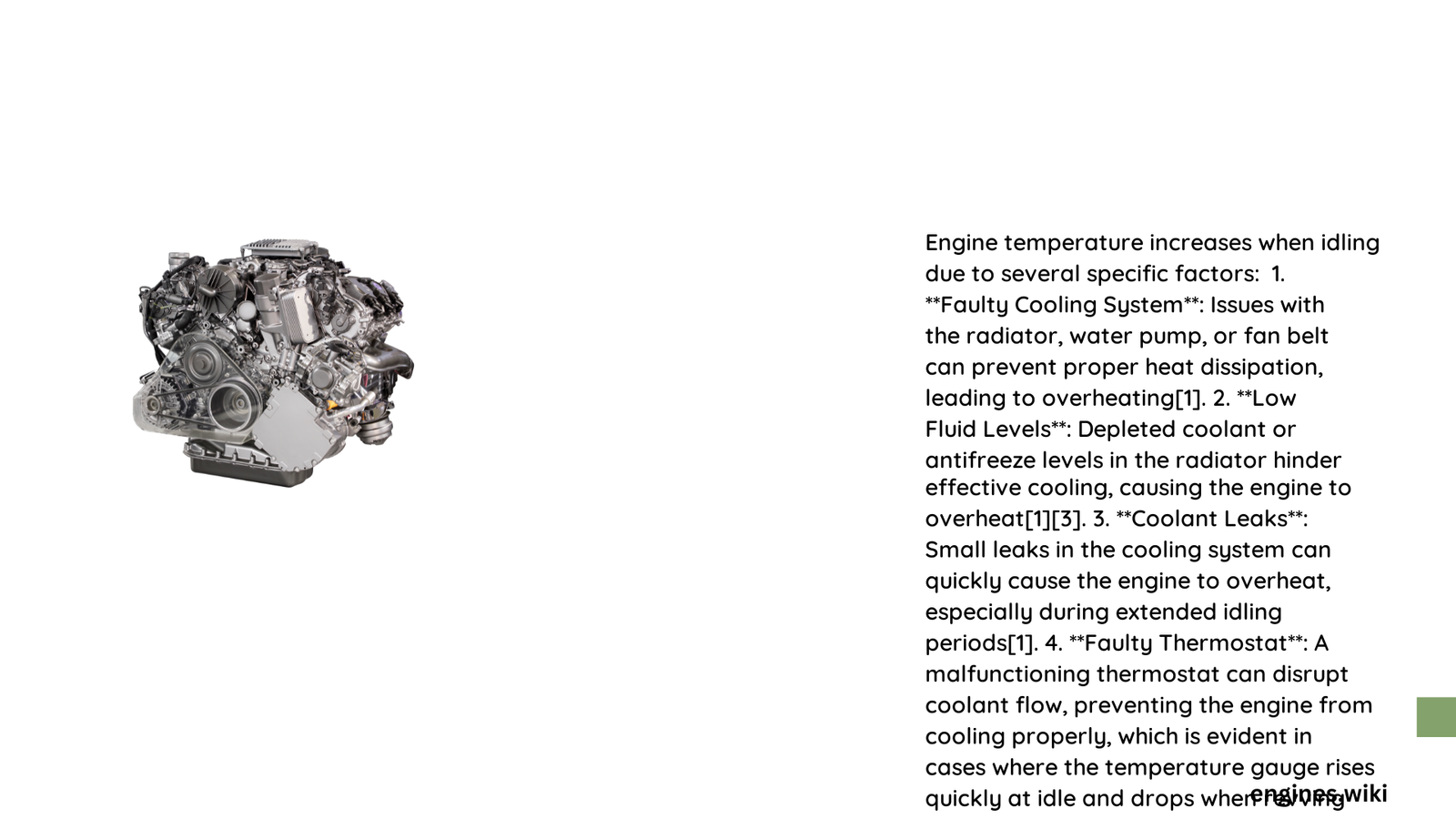When your vehicle’s engine temperature unexpectedly climbs while stationary, it signals potential underlying mechanical issues that demand immediate attention. Modern engines are complex systems where multiple components interact to regulate temperature, and any disruption can lead to significant performance problems and potential long-term damage if left unaddressed.\n\n## What Causes Engine Temperature to Rise During Idle?\n\n### Why Does Coolant Level Impact Engine Temperature?\n\nCoolant plays a crucial role in maintaining optimal engine temperature. Low coolant levels can create air pockets within the cooling system, preventing proper heat dissipation and causing temperature spikes during idle periods.\n\n#### Key Coolant-Related Temperature Factors\n\n| Factor | Impact | Potential Consequence |\n|——–|——–|———————-|\n| Low Coolant Level | Reduced Heat Transfer | Overheating |\n| Coolant Leaks | System Pressure Reduction | Temperature Instability |\n| Contaminated Coolant | Reduced Thermal Efficiency | Potential Corrosion |\n\n### What Happens When Cooling Fans Malfunction?\n\nCooling fans are critical during idle, as they compensate for the lack of natural airflow. When fans fail, heat accumulates rapidly, causing engine temperature to rise dramatically.\n\n#### Common Cooling Fan Problems\n\n- Electrical connection issues\n- Mechanical fan blade damage\n- Faulty fan motor\n- Broken temperature sensor\n\n### How Do Thermostat Issues Contribute to Temperature Rise?\n\nA malfunctioning thermostat can disrupt the entire cooling system’s operation. When stuck closed, it prevents coolant circulation, causing immediate temperature escalation.\n\n#### Thermostat Failure Symptoms\n\n1. Inconsistent temperature readings\n2. Rapid temperature increases\n3. Reduced heater performance\n4. Engine overheating\n\n### Can Prolonged Idling Cause Temperature Problems?\n\nExtended idle periods, especially in hot environments, can stress the cooling system. Running air conditioning during idle further increases engine load, potentially triggering temperature spikes.\n\n## Diagnostic and Prevention Strategies\n\n### How to Diagnose Engine Temperature Issues?\n\n1. Check coolant levels regularly\n2. Inspect cooling system for visible leaks\n3. Test cooling fan operation\n4. Verify thermostat functionality\n5. Use diagnostic tools for precise assessment\n\n### What Maintenance Prevents Temperature Problems?\n\n- Annual cooling system flush\n- Regular coolant level checks\n- Timely replacement of worn components\n- Professional cooling system inspection\n\n## Cost Considerations for Repairs\n\n| Component | Estimated Replacement Cost |\n|———–|—————————-|\n| Radiator Fan | $100 – $300 |\n| Thermostat | $50 – $200 |\n| Coolant Flush | $50 – $150 |\n| Complete Cooling System Repair | $500 – $1,000 |\n\n## Professional Recommendations\n\nIf engine temperature consistently rises during idle, seek professional diagnostic services. Persistent issues might indicate complex system failures requiring specialized expertise.\n\n### Warning Signs Requiring Immediate Attention\n\n- Rapid temperature gauge movement\n- Steam from engine compartment\n- Burning smell\n- Reduced engine performance\n\n## Conclusion\n\nUnderstanding and addressing engine temperature fluctuations during idle requires systematic approach, regular maintenance, and prompt professional intervention when necessary.\n\n### Reference:\n- CarParts.com – Engine Overheating Guide\n- 1A Auto Blog – Cooling System Diagnostics\n- Capitol Subaru – Temperature Management

